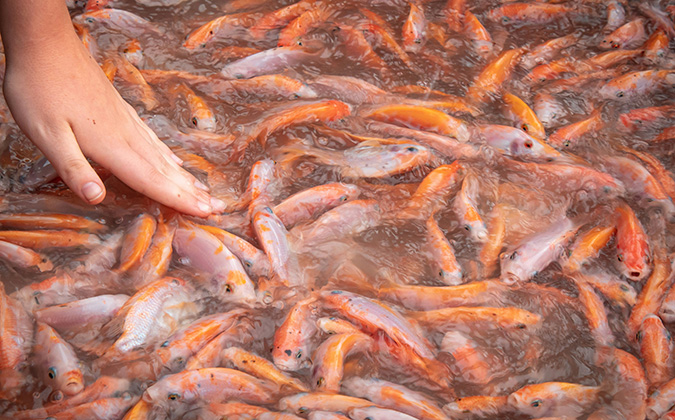
Some functional feeds may have trade-offs for salmon health — new study
There is a complex balance between the benefits and drawbacks of functional feeds for Atlantic salmon when fish are facing concurrent health threats, a Canadian study suggests.
Led by scientists from the University of Prince Edward Island, the research explored how these specialized diets, enriched with immunity-boosting additives, affect Atlantic salmon’s ability to fend off sea lice and salmon anemia virus (ISAv).
Feeds rich in fatty acids protected fish against sea lice well, the study found. But these feeds led to higher mortality rates among salmon that were also battling ISAv.
Benefits and unknowns of functional feeds in aquaculture
In recent years, many fish farmers have added functional feeds to their disease-fighting toolkits. The feeds are enriched with additives, such as fatty acids, probiotics and enzymes, to support fish immunity.
Functional feeds can be less time-consuming and labor-intensive for farmers to administer than the traditional disease-control methods of vaccines, antibiotics and anti-parasiticides. However, scientists still have much to learn about the precise effects of functional feeds on fish health.
Investigating feeds’ impacts on salmon health
The researchers examined whether functional feeds change how salmon cope with more than one infection.
Salmon infected with sea lice are more vulnerable to ISAv and are more likely to die from the virus, because the lice-release compounds interfere with the fish’s immune system.
In their experiment, the researchers fed Atlantic salmon in tanks with one of four diets. These varied in their levels of fatty acids (EPA/DHA), omega-3, omega-6 and immunostimulant additives:
- Low fatty acids (0.3% EPA/DHA), high omega-6
- High fatty acids (1% EPA/DHA), high omega-6
- High fatty acids (1% EPA/DHA), high omega-3
- Low fatty acids (0.3% EPA/DHA), high omega-6, plus an immunostimulant (which activates an aspect of the immune system).
They compared the diets’ effects on salmon infected with sea lice alone to salmon that had both sea lice and ISAv.
Shifting priorities in immune responses
The researchers’ inspections of the fish revealed a trade-off between the diets’ health impacts.
Fish on the high fatty acid diets (1% EPA/DHA) had significantly fewer lice. The researchers suggest that the fatty acids helped heal the salmon’s louse wounds.
However, fish on the high fatty acid diets that also had ISAv had the highest mortality rates. The healing activity in response to the lice may have diverted immune responses away from fighting ISAv, the authors speculate.
The results suggest a complex interaction between diet, parasite control and viral resistance that deserves further attention.
“We must continue to investigate the effects of dietary replacements and functional diets, as well as the timing and duration of administration of these feeds to further enhance the immune response of Atlantic salmon,” the researchers concluded.
You can read a pre-print of the full article via SSRN.






